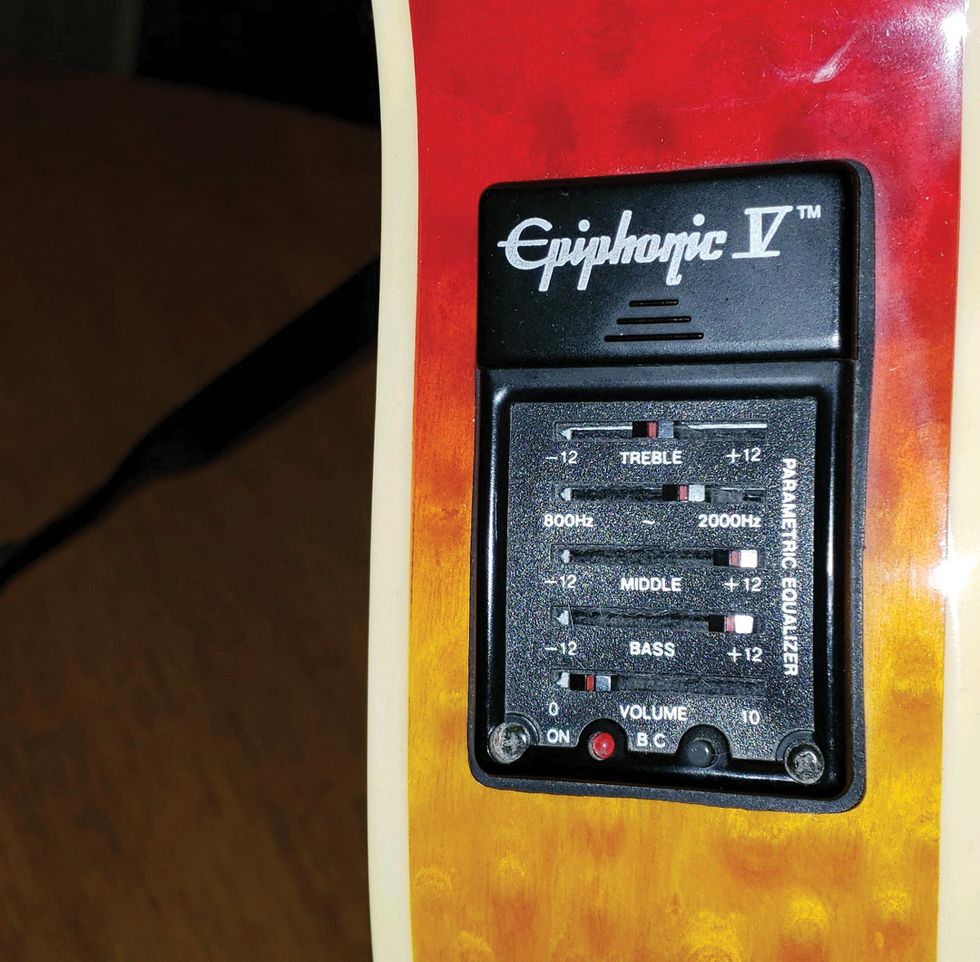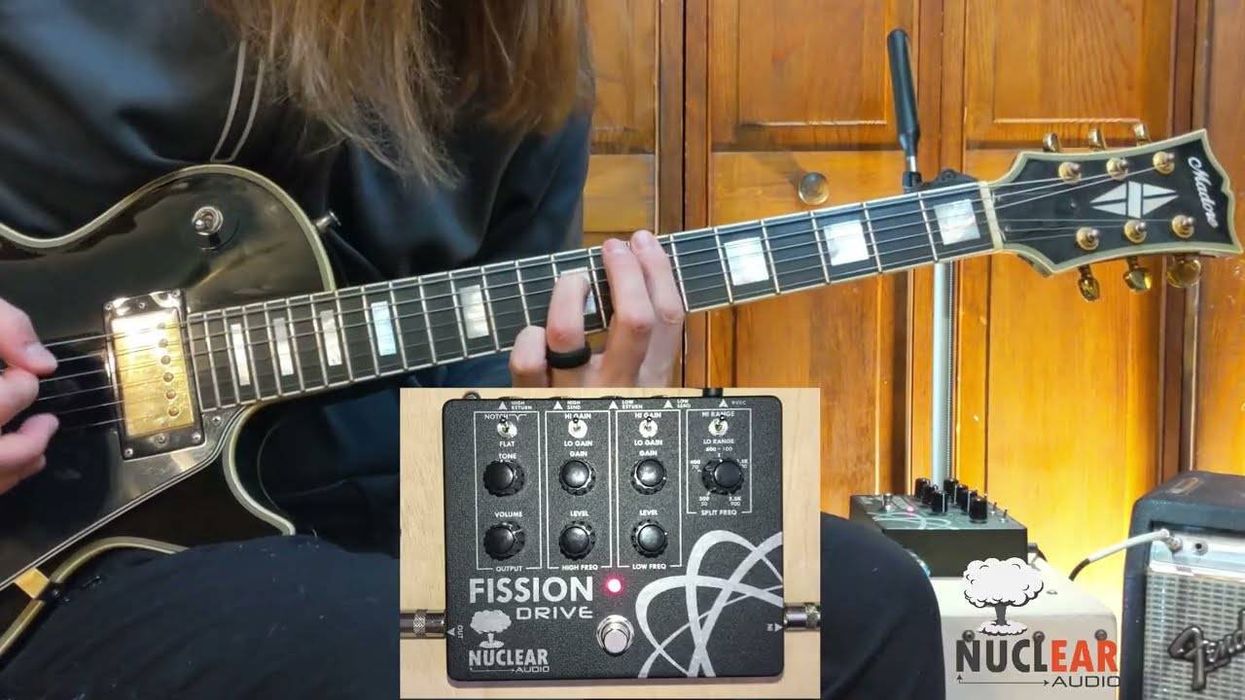Hey Zach,
I acquired this Epiphone from a friend in the mid 2000s (serial number S93050042), when I thought I was going to become a rock star, but it has sat in my spare bedroom for well over a decade now, mostly collecting dust. My 4-year-old son is showing some interest in it and I’m wondering if I could let him mess around on it or if it is worth enough to keep it from getting beat up too bad. What is this worth today and do you think it is a good beginner guitar for my son?
Thanks,
Jerry in Battle Lake, MN
Hey Jerry,
There is that old proverb “you can’t teach an old dog new tricks,” but don’t let that stop you from finding your inner rock star again and learning to play yourself! Your Epiphone is a PR7E and comes from their long-running Presentation series of acoustic instruments—first introduced in the late 1970s. Let’s talk some Epiphone history.
In 1957, Chicago Musical Instrument Co. (CMI), who, at the time, owned Gibson, bought Epiphone and merged operations with Gibson at their Kalamazoo factory. Both Gibson and Epiphone produced U.S.-built instruments throughout the rest of the 1950s and 1960s—some very similar and some unique to each brand.
As instrument manufacturers overseas became more prevalent, Gibson and Epiphone’s then-new owner ECL (later renamed Norlin) decided to outsource production of Epiphone instruments to Japan in the 1970s. This drew a distinct line in the sand for the two brands, between beginner/intermediate (Epiphone) and advanced/professional (Gibson).
Norlin then began moving production from Japan to Korea in the late 1970s, and by the mid-1980s, all Epiphones were built in Korea. (Today, instruments from Japan and Korea are generally regarded as some of the higher-quality imports, but that wasn’t necessarily the case back in the 1970s.) Beginning in 1997, Epiphone moved all its production to China and Indonesia. While some special Epiphone runs have been produced in the U.S., most of their instruments are still either budget variations of their Gibson cousins or beginner/intermediate guitars that Gibson doesn’t produce.
Epiphone’s line of guitars varied greatly through the ’70s, but the Presentation series of acoustics quickly became established in their catalog. Early PR models (PR 725, PR 735, PR 745, etc.) featured traditional-dreadnought body shapes with varying levels of wood and trim.
After the acoustic-electric trend gained momentum in the ’80s, thinner-bodied acoustics designed to be amplified flourished.
As acoustic-electric guitars became more popular in the 1980s, several manufacturers, such as Washburn and Epiphone, began producing thinner acoustics that were specifically designed to be amplified. The PR7E (along with its cousin, the PR-5E) falls into this camp. It’s a thin-body acoustic with onboard electronics and a sharp Venetian cutaway for upper-fretboard access. Introduced in the early 1990s, it featured a bird’s-eye-maple body, a mahogany neck, a 20-fret rosewood fretboard with diamond-shaped inlays, a rosewood bridge, gold hardware, a piezo bridge pickup, and an onboard 3-band EQ with mid sweep. It was available in natural, transparent black, orange sunburst, or heritage cherry sunburst, which is what your guitar is finished in. The PR-5E was very similar, but it had a mahogany back and sides, and a less elaborate, figured-maple top. The PR7E was produced through 2002 and the PR-5E is still offered today with a street price of $350.
There are quite a few of these guitars floating around in the used marketplace today, and a PR7E in excellent condition is worth between $275 and $325. The serial number tells us your guitar was built in 1993, which tells us it was built in Korea and helps with the value.
You can certainly buy a beginner guitar for much less than that today, but the important thing to consider is that this guitar has a full 25 1/2" scale, so your son likely wouldn’t be able to wrap his arms around it. For now, I’d suggest you find him a 3/4- or even a 1/2-sized guitar to play around with, and when it’s time for him to graduate to a bigger/better model, your PR7E will fit the bill perfectly. This isn’t a treasure in terms of monetary value, but it’s a well-built beginner guitar and we all have to start somewhere. Who knows? Maybe you could give it another shot and learn to play while your son does!













![Rig Rundown: Russian Circles’ Mike Sullivan [2025]](https://www.premierguitar.com/media-library/youtube.jpg?id=62303631&width=1245&height=700&quality=70&coordinates=0%2C0%2C0%2C0)





